Sacred but not safe: Documenting airstrikes on religious and ceremonial gatherings
2 min read
Myanmar Witness

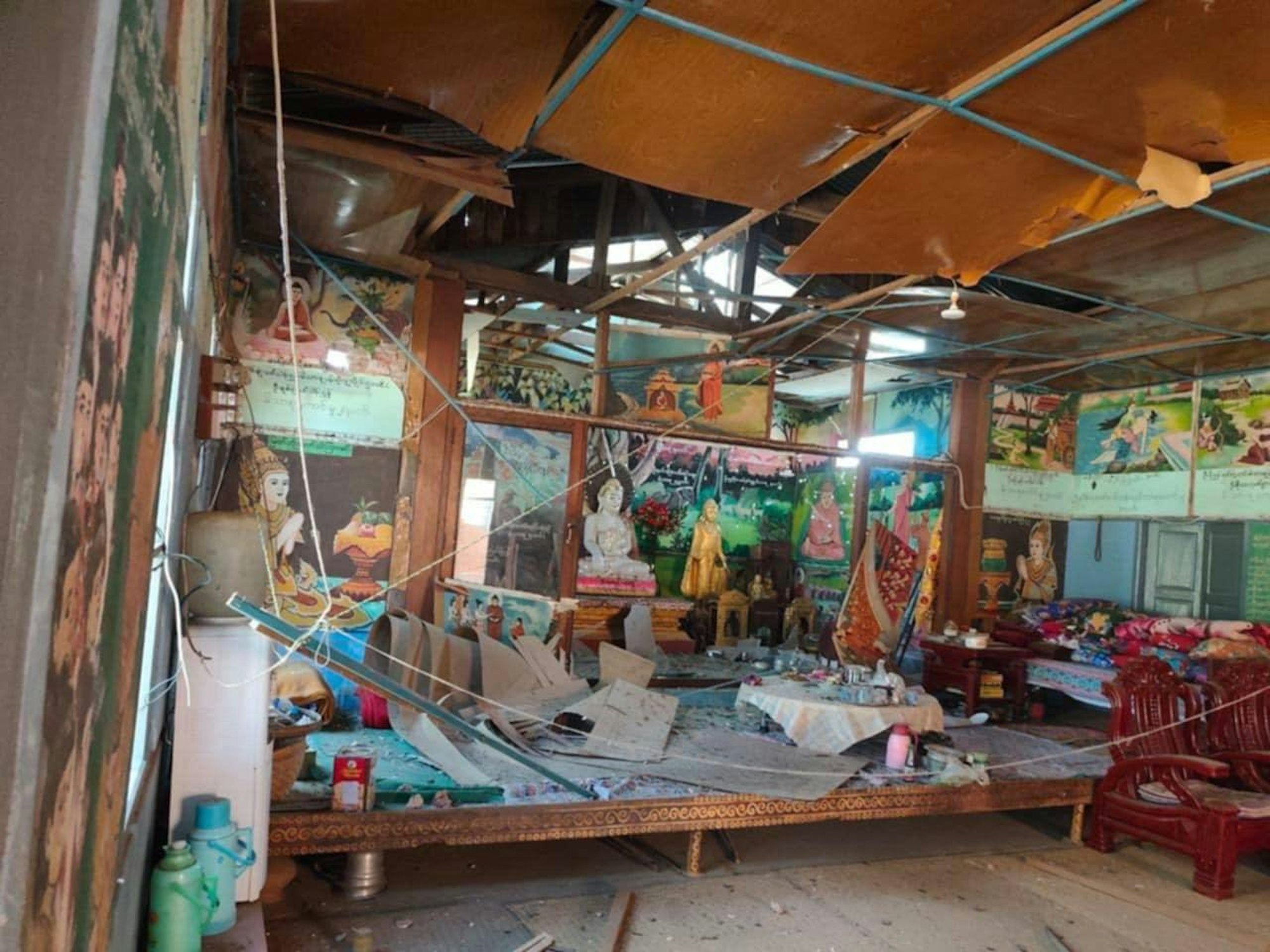
A guest reception area allegedly damaged during a wedding ceremony in a monastery in Magway Region. Photo: People’s Spring
Summary
Myanmar Witness has investigated two reported airstrikes that struck religious sites in Magway and Sagaing regions on 25 and 26 February 2025. In both cases, several reports suggest that wedding ceremonies were taking place at the time of the incidents – raising concerns about the potential targeting of civilian gatherings.
On 25 and 26 February 2025, airstrikes reportedly hit religious compounds during wedding ceremonies in Magway and Sagaing regions. These incidents form a part of a broader trend, which Myanmar Witness continues to monitor and document: military operations hitting large civilian gatherings, such as weddings, which are often held in or near religious buildings.
For example, in one of the documented incidents, a wedding invitation was uploaded to social media (source redacted due to privacy issues) on 25 February 2025, the same day the airstrike hit a monastery in Son Kone village, Magway Region.
Latest reports, direct to your inbox
Be the first to know when we release new reports - subscribe below for instant notifications.
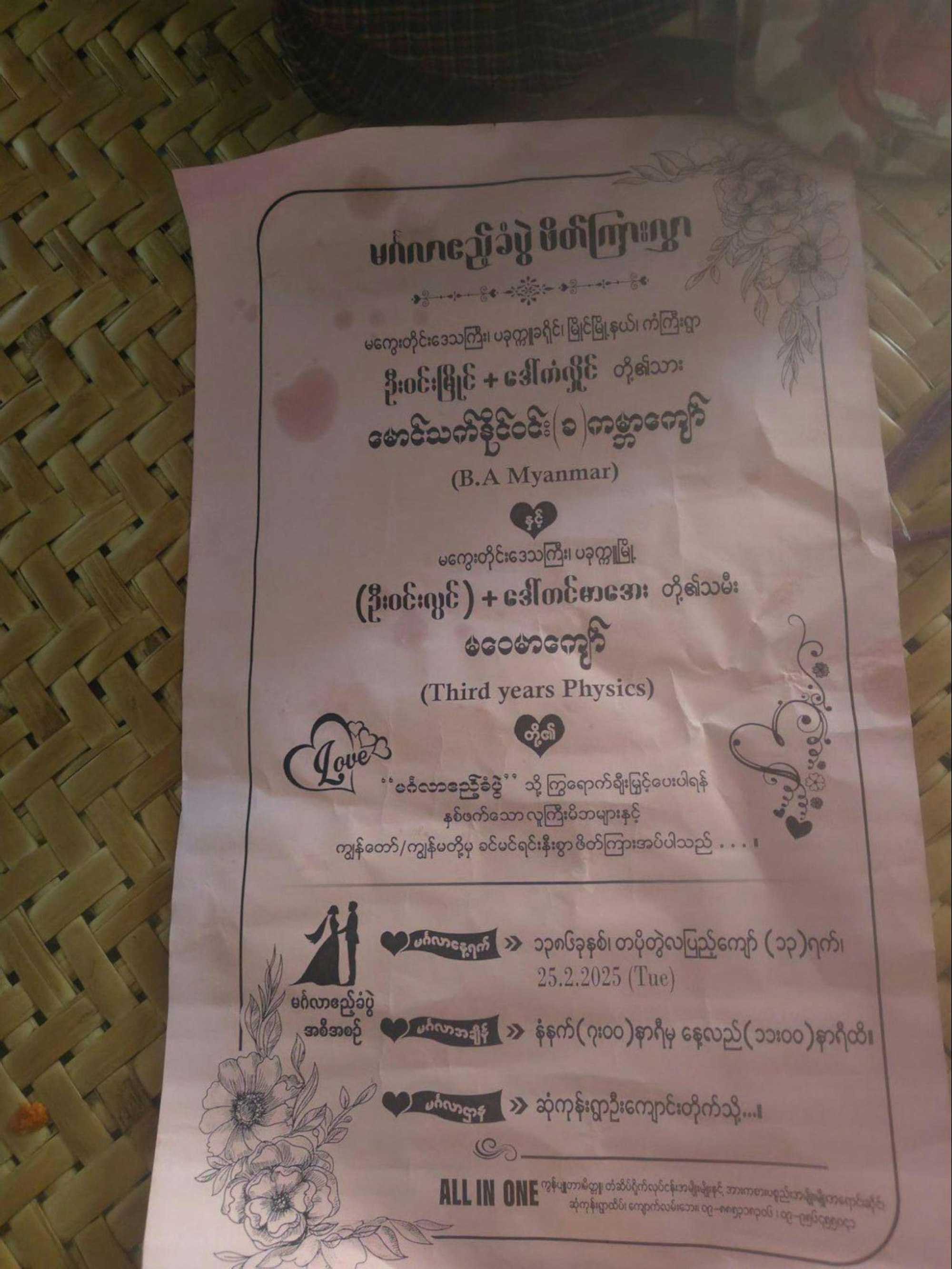
A screenshot taken from a Facebook post showing a wedding invitation (source redacted due to privacy concerns)
User-generated content (UGC) from the scene included a welcome board bearing the couple’s names as well as images of the destroyed reception area. It was reported that at least 11 people were killed and over 22 were injured.

Image of a wedding welcome board adorned with flowers, placed in front of the monastery building [21.650454, 94.651404] (source: MFP)
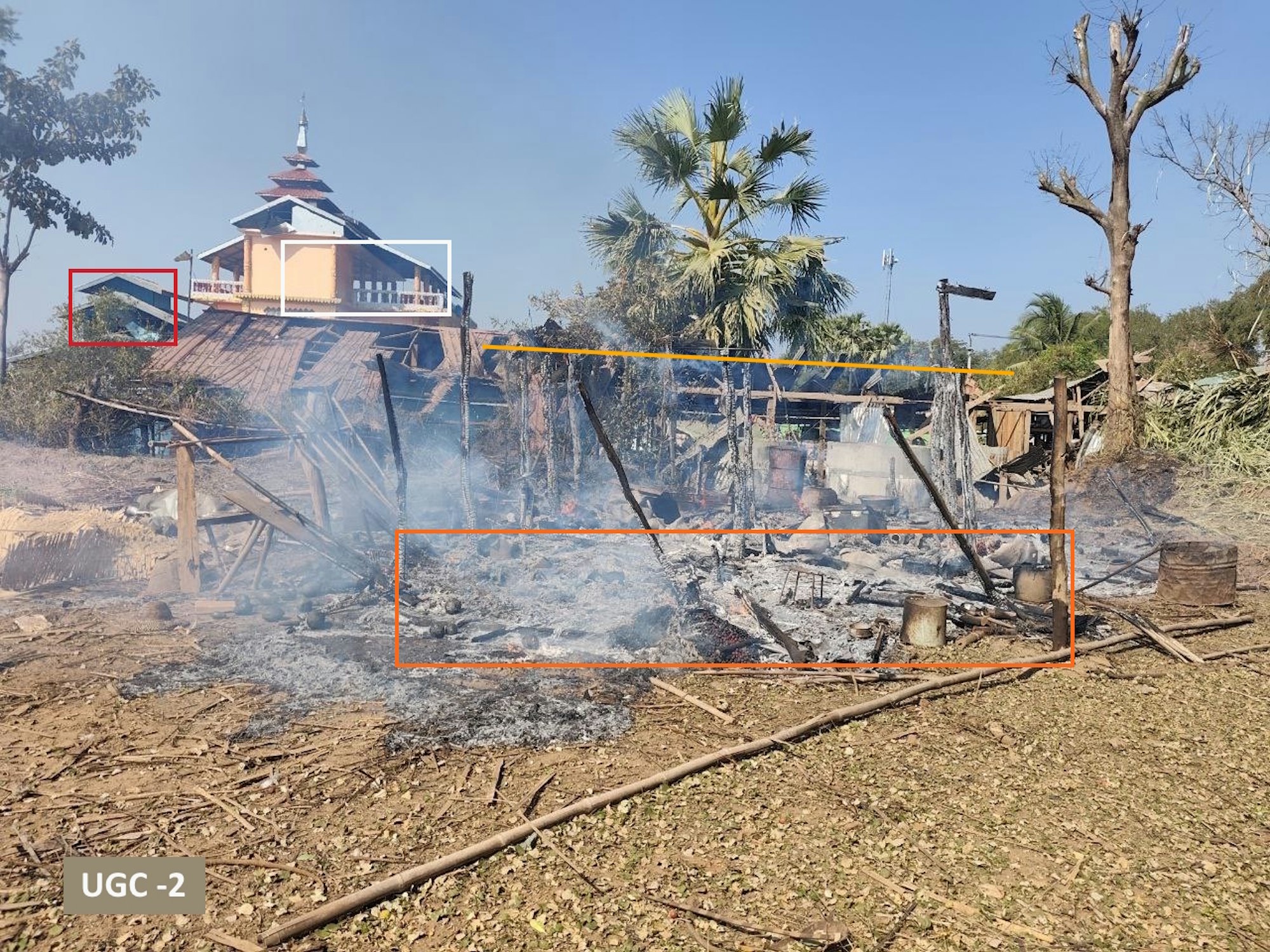
An image of a destroyed building geolocated to [21.650608, 94.651880], reportedly the kitchen area (source: MFP)
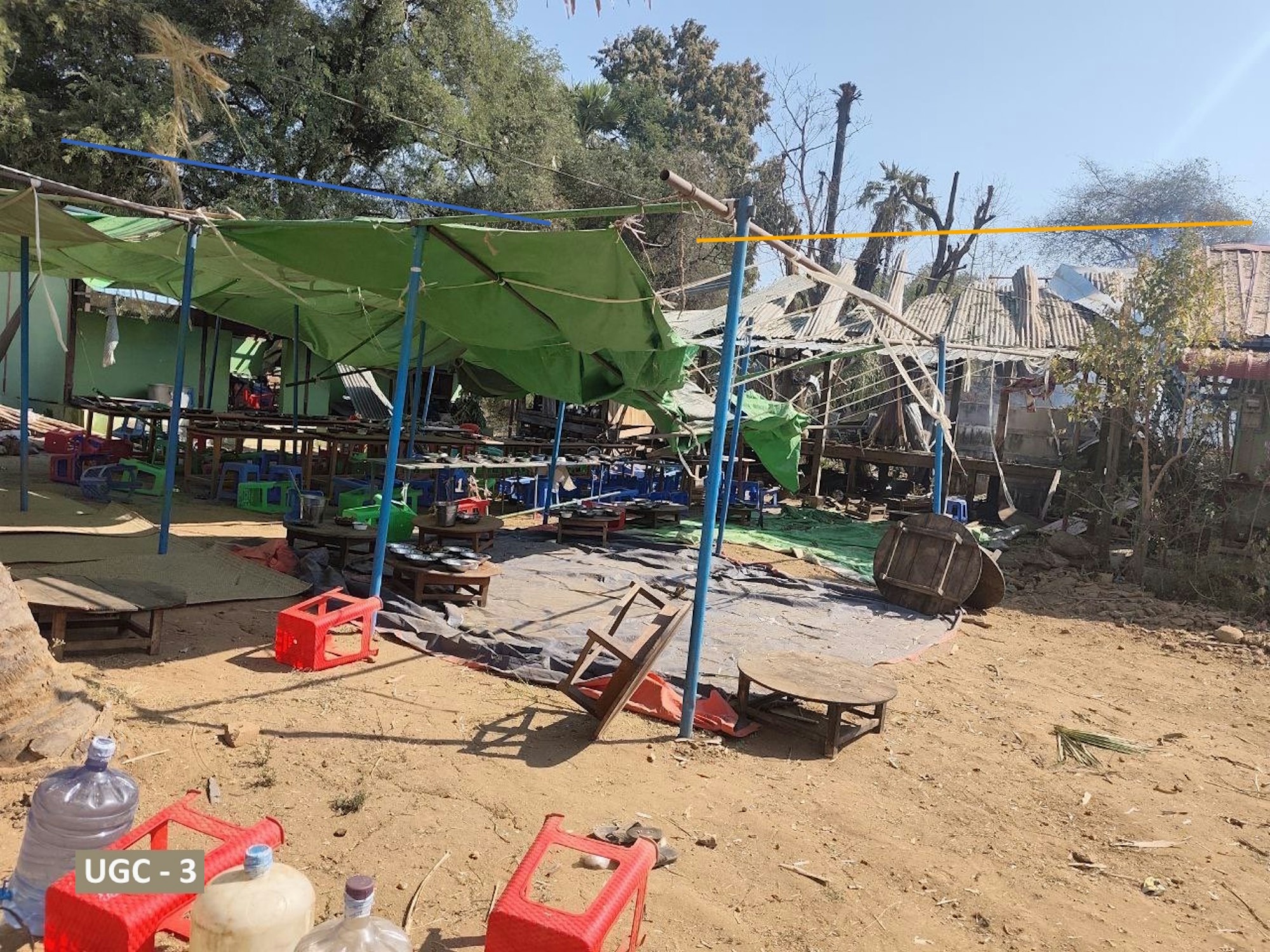
An image of the damaged temporary tent reportedly used for the guest reception [21.650688, 94.651651] (source: MFP)

Visualisation of satellite imagery showing the location of UGC posted by MFP, with geolocated points labelled above as UGC 1 [21.650608, 94.651880], UGC 2 [21.650608, 94.651880], and UGC 3 [21.650688, 94.651651] (source: Maxar)
A second strike
The second airstrike, a day later, hit a pagoda in Me Oe village, Sagaing Region. Although no casualties were reported, claims suggested that a wedding was in progress. In both of these cases, Myanmar Witness carried out geolocations and analysed structural damage and military aircraft activity nearby, and tried to confirm whether the weddings were deliberate targets.
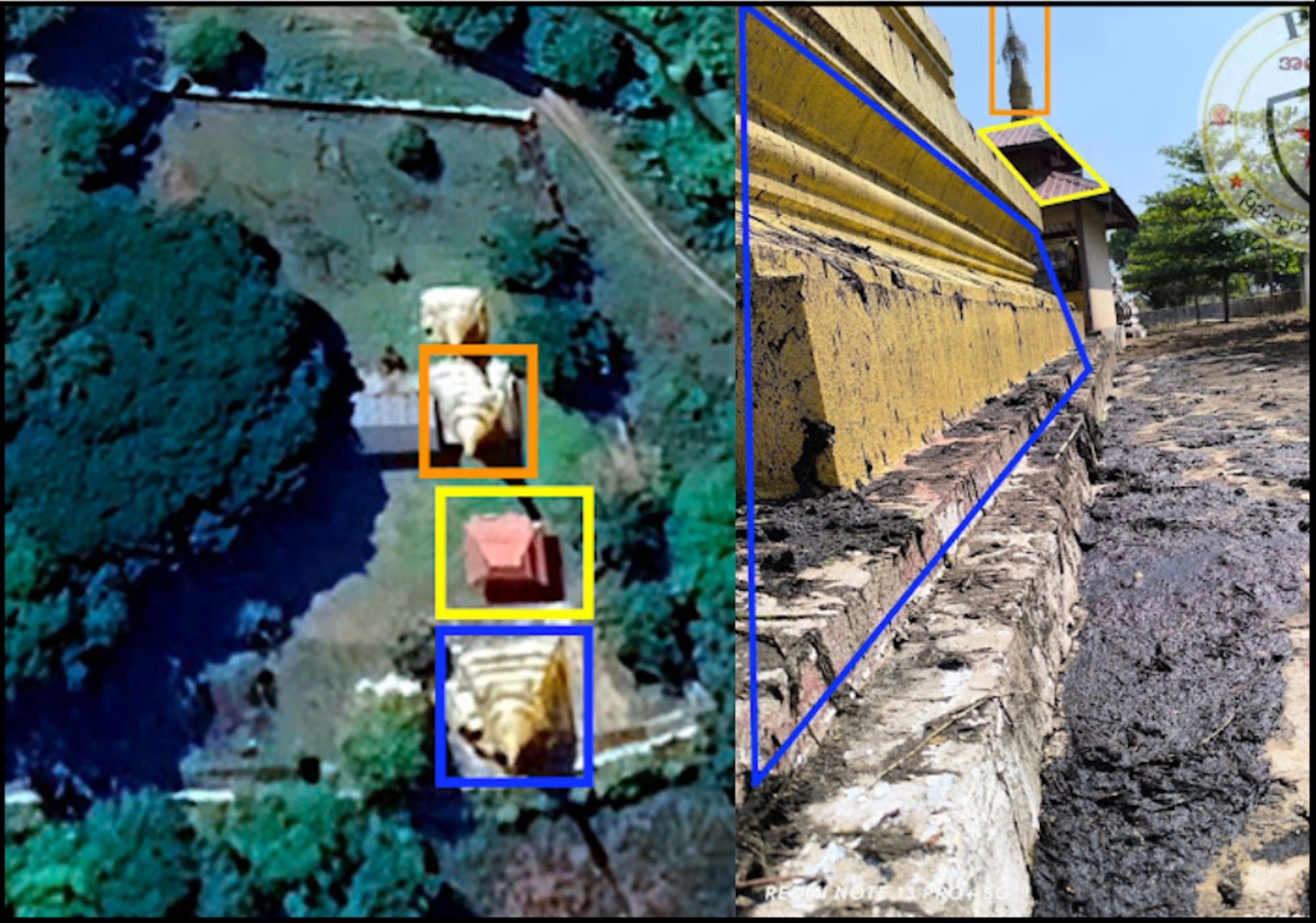
[Left] Google Earth imagery showing the location of the temple. [Right] UGC of the temple (Source: Khit Thit Media)
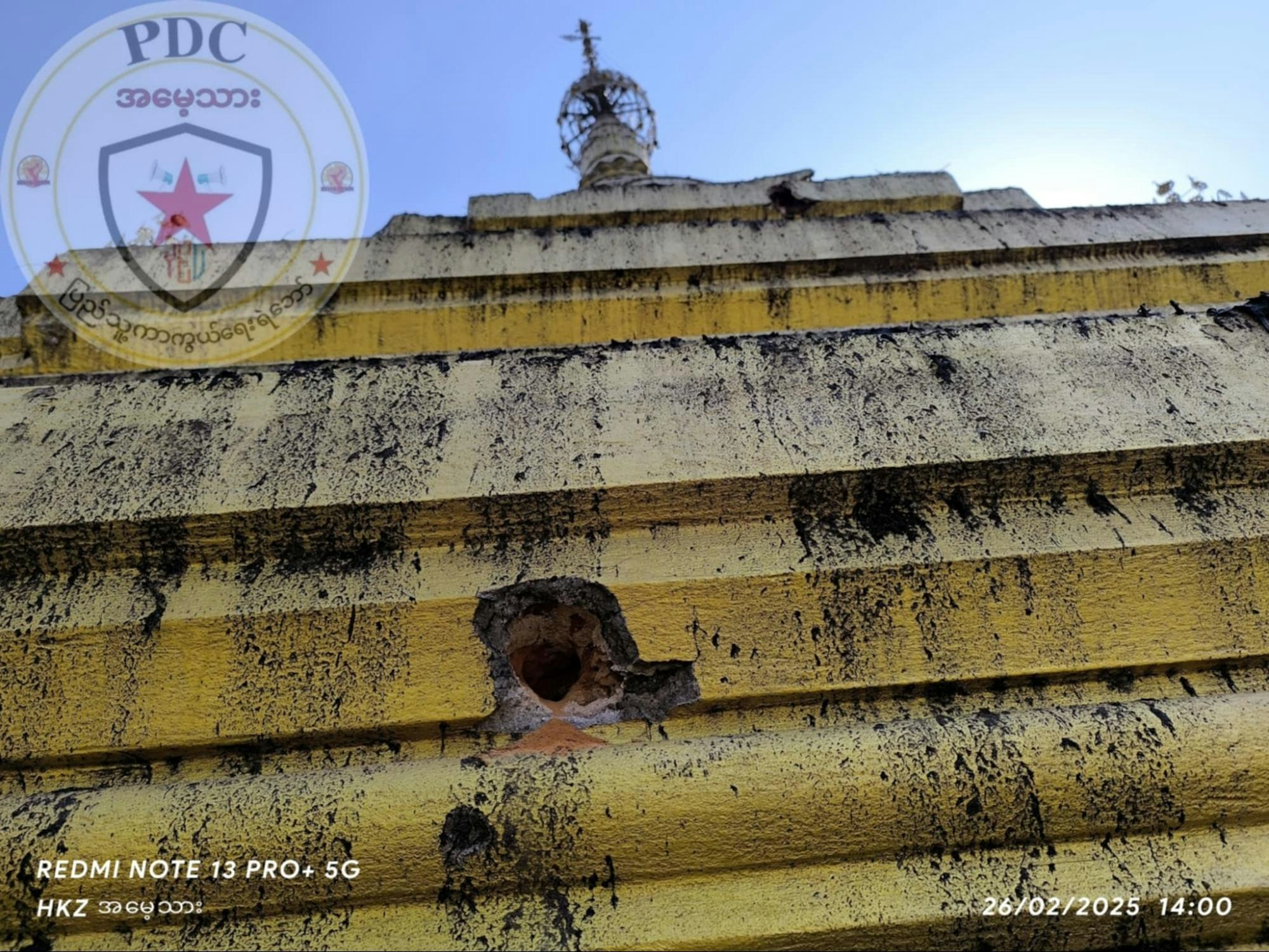
UGC uploaded on the same day as the reported attack, containing timestamps, supports the event occurring on or before 26 February 2025 (source: Khit Thit Media)
Broader trend
The analysis appears to confirm an ongoing pattern. In 2024, Myanmar Witness documented 109 claims of religious sites damaged in airstrikes across 87 incidents. This included a wedding that was reportedly hit in Mingin, Sagaing Region. These trends highlight that religious and cultural sites are becoming increasingly at risk of complete destruction as a result of internal conflict in the country.
As is the case in many parts of the world, religious sites in Myanmar often act as both sacred spaces and community hubs. They host local events and life celebrations, such as weddings, and under international humanitarian law, these sites should be protected from military operations. Whether these places are being targeted or not, the repeated destruction of sites across the country raises urgent questions on military strategy and civilian protection.
Myanmar Witness will continue to monitor, investigate and archive incidents in a bid to support accountability efforts and provide insight into trends.
